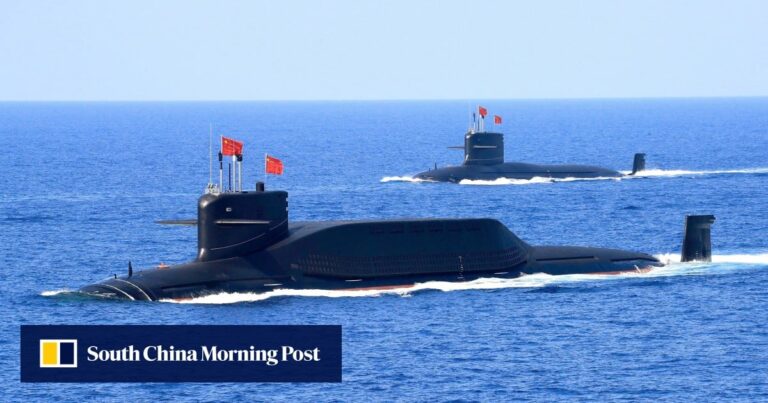The scientists said the biggest challenge for any anti-satellite mission is not hitting the satellite, but concealing the attack.
Missile launches often leave long smoke trails, and a ground attack could easily reveal one’s position and expose it to destruction by enemy fire — “too risky,” the researchers wrote.
Satellites are also getting smaller.
“Submarine-based laser weapons can solve these problems.”
The paper details a procedure for attacking satellites like Starlink over the ocean.
“When a satellite comes within attack range, the laser weapon is raised. Due to limitations in the submarine’s detection equipment, other forces need to guide the satellite’s location before the submarine can attack it. After the attack is completed, the submarine can dive to await its next mission or return to its home port.”
China has more than 900 satellites in orbit, according to official data released this month. The United States has seven times as many, most of which are part of Starlink.
Developing a laser weapon faces many technical challenges, from energy storage to thermal and optics, but China has accelerated its research and made many advances since Starlink was used in the Ukraine war.
These advances include power systems that can support high-power, high-density shots, powerful yet compact solid-state lasers, fiber optic straws that can transmit over 10,000 watts of power with high quality, and the ability to combine laser beams using hundreds of such optical fibers.

Wang’s team said that in addition to anti-satellite operations, submarines equipped with laser weapons could carry out many missions, including attacking anti-submarine aircraft, escorting merchant ships and strategic missile submarines, deploying off the coast of enemy countries to carry out anti-missile missions, and attacking land targets such as radars and oil storage facilities.
According to their estimates, a submarine-mounted laser weapon of around 150 kilowatts would have a range of more than 20 kilometers and could destroy the photoelectric detection system of an anti-submarine aircraft in one-fifth of a second. A continuous shot could even penetrate the fuselage of an aircraft.
“When conducting a nuclear counterattack mission, the escort submarines could first use laser weapons to disrupt or destroy satellites above the area, thereby disrupting the functioning of enemy space-based surveillance systems and thus achieving concealment of the missile launch,” they wrote.
China’s maritime shipping is becoming busier.
Traditionally, escort of merchant ships has mainly been carried out by surface vessels, but these vessels have low self-sufficiency and are easily detected and attacked.
Submarines, on the other hand, are stealthy, highly self-sufficient, and capable of operating continuously underwater for long periods of time.
What’s more, submarines equipped with laser weapons could be used to shoot down aerial targets attacking merchant ships, as well as to attack enemy surface ships and submarines with anti-ship missiles and torpedoes, the researchers say.
China can also deploy these submarines in enemy ports.
“Through information previously obtained by other forces or our own detection devices, we can locate the location of enemy oil storage facilities and use submarine-mounted laser weapons to attack the targets, causing damage to related facilities or causing fires, which can weaken the enemy’s ability to extract oil from the sea and shorten the duration of the war to a certain extent,” Wang’s team said.
“When it comes to island nations, most of their civilian supplies are transported by sea. Attacking and blockading coastal ports with submarines can prevent the supply of relevant civilian supplies, potentially affecting the domestic economy, production and daily life.”
“This will reduce public support for the war and provoke internal conflict,” they added.



